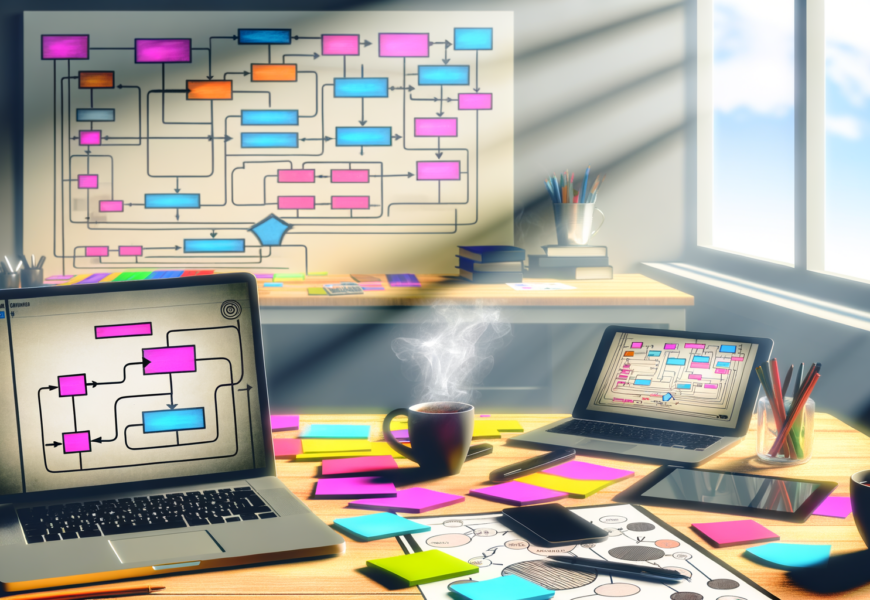In today's fast-paced business world, crafting efficient team workflows is paramount to achieving success. It’s not just about getting tasks done; it’s about doing them in a way that boosts productivity, encourages collaboration, and sparks innovation. This guide will walk you through essential strategies to streamline your team's processes, ensuring every task is completed with maximum efficiency. From understanding the basics to leveraging technology and fostering a collaborative environment, we cover it all. Implementing these workflow strategies will unlock your team's full potential, setting the stage for unprecedented success.
Understanding Team Workflows: The Basics
Team workflows represent the sequential tasks and processes your team follows to achieve goals. Think of them as the backbone of your team operations. When optimized, these workflows improve productivity, enhance team dynamics, and ensure consistent output. But what makes a workflow effective? Key components include clear task delegation, streamlined communication channels, and robust workflow management systems. Optimizing these aspects provides clarity and direction, allowing your team to focus on what truly matters—achieving results and driving innovation.
Identifying Bottlenecks in Your Current Workflow
Even the best teams encounter workflow inefficiencies. Recognizing bottlenecks is critical for improvement. Common indicators include missed deadlines, frequent miscommunications, and duplicated efforts. To diagnose these issues, you must delve into data analysis, conduct team surveys, and observe day-to-day operations. Continuous evaluation and feedback are essential in this process. Regularly assessing workflows ensures that inefficiencies are addressed promptly, fostering an environment of continuous improvement and adaptability.
Streamlining Workflow Processes
Redesigning workflows can seem daunting, but with a structured approach, it becomes manageable. Begin by mapping out existing processes using tools like flowcharts to visualize workflows clearly. This helps identify redundancies and opportunities for automation or delegation. Once mapped, prioritize tasks based on impact and urgency, setting realistic deadlines that challenge your team while considering their capacity. This strategic planning sets the foundation for a more efficient, agile team capable of scaling new heights.
Leveraging Collaboration Tools for Better Workflow
Today’s digital landscape offers a plethora of collaboration tools designed to enhance communication and optimize workflows. Platforms such as Asana, Slack, and Trello provide centralized hubs for task management, real-time collaboration, and performance tracking. Choosing the right tool depends on your team's specific needs—consider ease of use, integration capabilities, and scalability. When used effectively, these tools can break down communication barriers, streamline processes, and increase overall team efficiency.
Fostering a Collaborative Team Environment
A collaborative environment is a fertile ground for productivity and innovation. Encourage transparency and open communication by fostering trust and accountability among team members. Regular team meetings, both formal and informal, play a crucial role in maintaining open lines of communication. These gatherings are not just about discussing progress; they’re an opportunity to celebrate small victories, address challenges, and reinforce team goals. Building morale through team-building activities further strengthens intra-team relationships, paving the way for seamless collaboration.
Measuring the Success of Your Workflow Optimization
To ensure long-term success, measuring the impact of your workflow optimization is crucial. Establish key performance indicators (KPIs) like task completion rates, time management efficiency, and stakeholder engagement levels. Regularly review these metrics through detailed analytics to identify what works and what needs re-evaluation. Celebrate milestones to keep the team motivated and tackle obstacles with constructive feedback sessions. This approach not only helps sustain workflow improvements but also fosters a culture of continuous growth and learning within your team.
Optimizing team workflows is a continuous journey that involves careful planning, consistent reevaluation, and a willingness to adapt. By identifying bottlenecks, leveraging innovative tools, and fostering a collaborative environment, your team can enhance efficiency and communication, reaching new heights of productivity. Begin your workflow transformation today and watch your team thrive.
For further insights and personalized guidance on optimizing team workflows, explore our additional resources or get in touch with our experts. Together, let’s unlock your team’s full potential!



